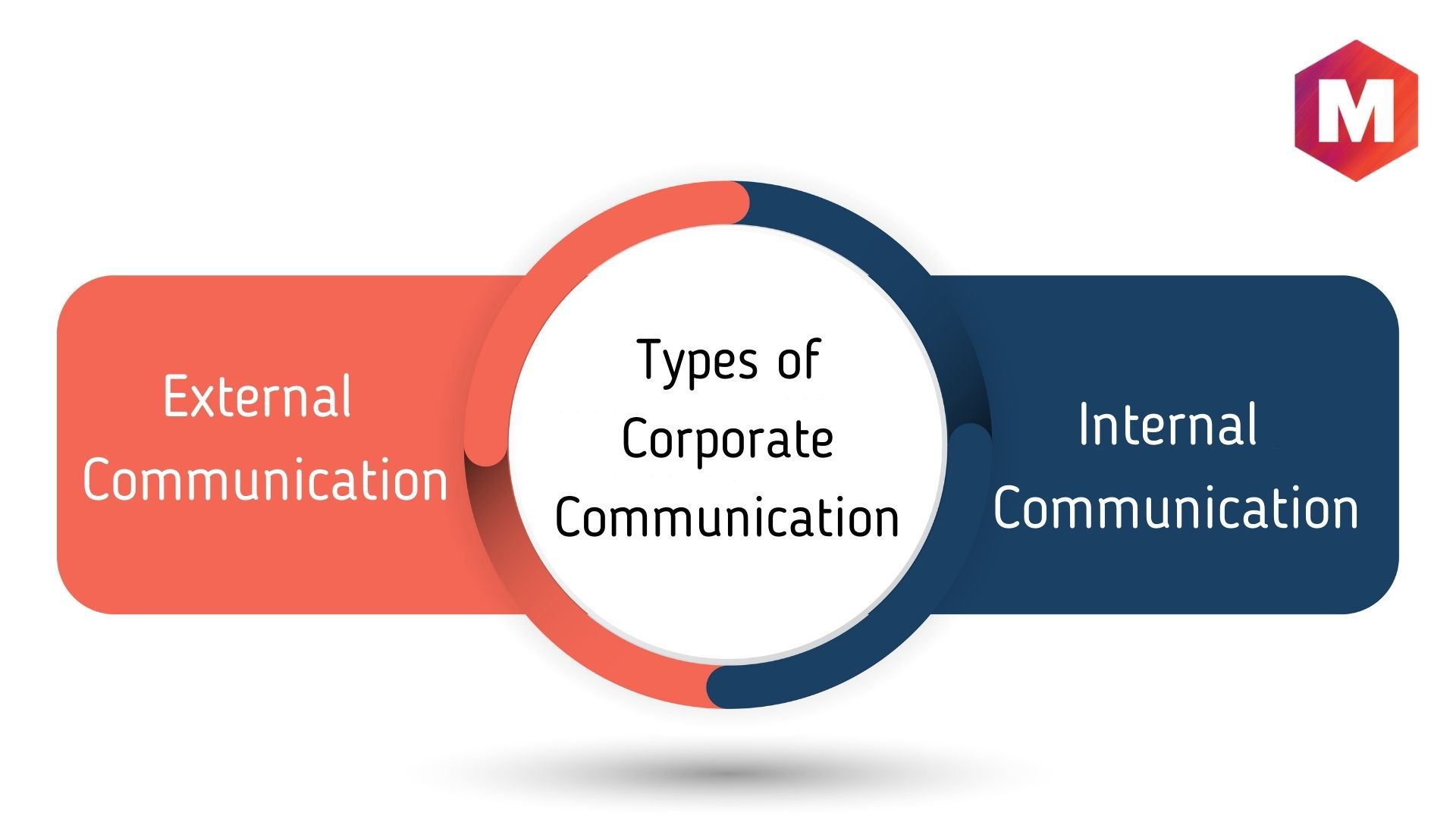Have you ever wondered what corporate communication is? Corporate communications refers to communication is an often-misunderstood phrase that is used in the workplace. The main goal of corporate communication is to keep employees informed and updated at all times. The only way this can happen is if the appropriate channels of communication are set in place. This article defines the various types of corporate communication, its scope and importance in the workplace, as well as the reasons why employees need to be updated at all times.
Table of Contents
What is Corporate Communication?
Corporate communication empowers businesses and organizations to communicate with internal stakeholders and external audiences like employees, customers, potential customers, media, the general public, stakeholders, government agencies, 3rd party regulators, etc.
Different variations of corporate communications depend upon the audiences it is addressing. From public relations and media relations to press releases, news conferences, HRM, Corporate Communications revolve around-
- Written words- (Promotional materials, reports, website copy, advertisements, memos, email, social media, press releases, etc.)
- Spoken words (Videos, press conferences, social media videos, meetings, interviews, etc.)
- Non-spoken communication (Photographs, infographics, illustrations, general branding, etc.)
Corporate communications manage and channelize all internal and external communications for ensuring favourable perceptions amongst different external stakeholders of an organization for transmitting credibility, engagement, coherence, ethics, information, message, etc.
By using corporate communication, an organization can explain its mission, vision, and values. It revolves around the management, marketing and corporate communications functions as well as organizational communication-
- Via management communication, external and internal audiences interact
- Via marketing communication, lead generation, conversions, sales, and ROI occur
- Via organizational communication, general public affairs, public relations, corporate advertising, investor relations, employee communication, and environmental communications channelize
Responsibilities of Corporate Communication
Communication is merely the transfer of sentences or information between two different communities or people. Moreover, the need for successful communication is quite important for a business firm.
The company needs to establish a stable connection with its consumers in the long run. Apart from this, the corporate communication strategy is one of the major parts of the whole communication system. It refers to the situation where a corporate business keeps in touch with its consumers.
There should be a uniform identity of the business in different areas across the market.
Any abruptness can destroy the main motive of corporate communication. It further signifies the boldness of the company that attracts more customers to use their products.
Some even consider corporate communication plays a key role in the success or failure of the brand. Further, it is based on several factors that can influence the outcome.
- Channelizing corporate branding for promoting the profile of the “company or organization behind the brand”
- Minimizing discrepancies in between the brand features and desired identity of an organization or company
- Delegating tasks in communication and formulating procedures for making decisions regarding the relevant communications
- Channelizing internal and external support for different corporate objectives
- Coordinating with international business firms
Types of Corporate Communication
As mentioned earlier, corporate communication stands over the pillars of numerous factors. Also, service employees do come under the same condition along with the users. These can be with both the external and internal factors connected to the company.
1. External Communication
There is no doubt that external factors are essential for corporate communication, but every business is established out there. Customers or the audiences of a company are included in this section. They reflect the actual image of the brand in the community and defines the number of sales. Even the company has significant control over handling these factors. Some of the examples of the same are-
1.1. Advertisement Levels
It is quite obvious that advertising will have a huge impact on corporate communication levels. Companies spend thousands of dollars to have a bright and attractive slogan and brand logo.
1.2. Media Influence & Public Relations
There is no doubt in the fact that the press and media will act as a spokesperson in the communication. It is quite understandable that anything that is included in the press coverage will directly reach your consumers.
2. Internal Communication
On the other hand, internal factors are related to various procedures running within the company walls. A company that is internally strong and firm will stand by the various ups and downs of the market. For a better understanding, some of the examples are,
2.1. Group Discussion
A discussion among the group of workers will strengthen overall team unity. The employees should be close to each other, both professionally and emotionally. Otherwise, they won’t be able to bear the pressure of the company’s target.
2.2. Daily Reports
Reports should be regular to keep a check on the progress of the business’s overall advancement. Several messages from the department can become a source of motivation for the workers.
Here is a video by Marketing91 on Corporate Communication.
Working of Corporate Communication
It is quite common to observe corporate communication in various sectors of the community. The new generation has started accepting it as a critical thinking significant addition to the success of their business.
As we move forward, corporate communication can lead the future of business and its image in the market. For that, it is quite necessary to understand the working of a corporate and communication strategy and campaign.
This will give you an overview of how the team of experts makes your vision for internal communications a reality. Two key factors upon which corporate communications depend upon are
1. The commitment of Employees
First, the dedication level of the employees and manager should be at the peak. Unification of the internal members is necessary for corporate communication and every task within the institute.
To make this easy, employees are also referred to as the ambassadors of their respective firms. If you provide all the necessary tools for them, they will take your company to new heights.
2. Reputation
It is often said that “Until you show, it won’t sell” and this proverb certainly depicts corporate communication scenarios. Building an effective reputation for the name of your brand is essential.
The customers tend to trust companies that have stronger brand credibility in the market. Ensure that any obstruction on your way should not be left untreated.
Benefits of Corporate Communications
Corporate communication is under the control of a specific communications department developed in the majority of the companies.
The department’s main aim is to propose some measures that can eventually lead to a better connection with the consumers. We will now discuss some benefits of the same –
1. Avoid Miscommunication
It is proved from several surveys that the lack of communication between the employees and managers is not productive. The managers must avoid any statements that can misguide the employees. Any potential mistake from their side can be dangerous for the name of the whole brand. Corporate and communication department also focuses on this aspect of the company and makes sure everything is running smoothly.
2. Better Services
As it also includes all the internal and external stakeholders and factors like customers, their needs should be the company’s priority. The employee should be worthy enough to solve all the issues and satisfy the customer about their product or service. If the customer feels suspicious about it, you will never be able to generate a strong connection.
3. Transparency
Successful corporate communication will enhance the overall transparency of the firm. For instance, if the employee is certain about the company’s culture and goal, he will certainly give his best. The same stands true for the customers as well. A company with good transparency policies will turn out to attract more customers.
4. Brand Awareness
At a time when millennials do not like to be sold via ads, corporate communication is one of the most effective ways to educate them for making informed purchasing decisions. This way, it improves public relations, media relations as well as internal communication and external communication that ultimately optimizes brand awareness.
5. Boosting Employee Engagement
The success of corporate communications department in any business is directly proportional to employee engagement. – And companies that enjoy high engagement rates are exceptional with their internal communication strategy. Corporate communications are integral to optimized engagement in any organization.
6. Sparking Innovation
Innovation is crucial for sustaining in the market and growing exponentially. Corporate communication channelizes the culture of innovation in companies. From inter-departmental collaboration to knowledge sharing to the media and public relations, corporate communication channelizes innovation.
7. Improving Employee Productivity
Internal communication is considered the most important factor in understanding and fulfilling employee expectations. This way, it develops a knowledge culture in communication departments of the organization. It also develops problem-solving culture, and ultimately boosts productivity.
8. Attracting Top Talent
Effective corporate communications strategy and communication is pivotal in attracting the best talents for any organization. Media relations, brand ambassadors, showcasing company culture, referrals from engaged employees, etc are some of the corporate communication strategies that attract top talents.
Starting a Career in Corporate Communications Professionals
Corporate communications is a field that requires a lot of different skills, but if you’re looking for a career with technical skills that allows you to work with people in interesting ways, this may be the right choice for you.
The first thing to consider about corporate communications is that it’s not just about writing—it’s about making sure your business gets the message out. You might write press releases, but you’ll also be responsible for writing internal memos and other documents. And while you’ll probably spend most of your day writing and editing, there are plenty of other things that fall under the umbrella of corporate communications: social media management, graphic design, event planning, customer communications, and more.
As an aspiring corporate communicator, you have some options when it comes to education. There are many programs available both online and at traditional institutions; however, if you want to go into this field full-time (rather than as a hobby), consider going all-in on your own education by earning a bachelor’s degree in English or journalism as well as an MBA or master’s degree in communication studies.
Conclusion
In the end, we can conclude our discussion by stating that corporate communication is never a bad deal for business firms. Moreover, the current scene of crisis communication in the market makes it even more important to be implemented.
Almost every company is gaining popularity, and no one wants to lack behind. Even the customers feel secure with the company that can cover them for long runs. On the other hand, investing firms will get involved with the company more often. The overall strength of the business will improve, and everyone would want to connect to the firm.
What is your corporate communication definition? How significant do you consider it in employee communications, news conferences, human resources, and information sharing?
Liked this post? Check out the complete series on Communication


Where are you publish these book